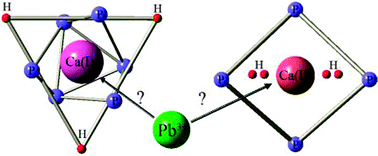Pb3+ radiation defects in Ca9Pb(PO4)6(OH)2 hydroxyapatite nanoparticles studied by high-field (W-band) EPR and ENDOR
Abstract
W-band

* Corresponding authors
a
Institute of Physics, Kazan (Volga Region) Federal University, Kremlevskaya str. 18, 4200008 Kazan, Russian Federatrion
E-mail:
sergei.orlinskii@ksu.ru, marat.gafurov@ksu.ru
Tel: +7 843 2926480
b
Department of Chemistry, M. V. Lomonosov Moscow State University, Lenniskie Gory 1, 119992 Moscow, Russian Federation
E-mail:
alenakovaleva@gmail.com, valery.putlayev@gmail.com, yudt@inorg.chem.msu.ru
Fax: +7 495 9390998
Tel: +7 495 9392074
W-band

 Please wait while we load your content...
Something went wrong. Try again?
Please wait while we load your content...
Something went wrong. Try again?
B. V. Yavkin, G. V. Mamin, S. B. Orlinskii, M. R. Gafurov, M. Kh. Salakhov, T. B. Biktagirov, E. S. Klimashina, V. I. Putlayev, Yu. D. Tretyakov and N. I. Silkin, Phys. Chem. Chem. Phys., 2012, 14, 2246 DOI: 10.1039/C2CP23601J
To request permission to reproduce material from this article, please go to the Copyright Clearance Center request page.
If you are an author contributing to an RSC publication, you do not need to request permission provided correct acknowledgement is given.
If you are the author of this article, you do not need to request permission to reproduce figures and diagrams provided correct acknowledgement is given. If you want to reproduce the whole article in a third-party publication (excluding your thesis/dissertation for which permission is not required) please go to the Copyright Clearance Center request page.
Read more about how to correctly acknowledge RSC content.
 Fetching data from CrossRef.
Fetching data from CrossRef.
This may take some time to load.
Loading related content
